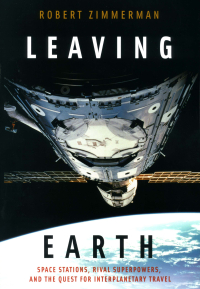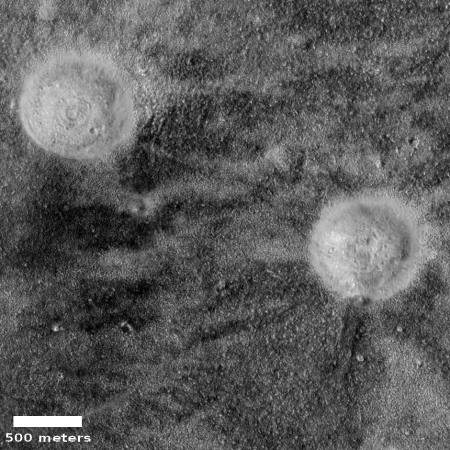NASA picks Axiom to build three private commercial modules on ISS
Capitalism in space: NASA today picked the new space station company Axiom to build three modules to ISS, designed to operate as a private commercial operation.
The first segment launch is targeted for 2024. The three segments will include a node with multi-ports, a crew module, and a research module, and will be the “hotel” for private tourists that Axiom hopes to send to ISS two or three times per year. The entire section will also be designed to eventually separate from ISS when that station is retired and operate, with more additions, as an independent station.
This decision did not include the actual contract, only the choice of company to build this new section of ISS. Later negotiations will determine the fixed price amount that NASA will pay.
Why did NASA pick Axiom, which has not yet launched anything, and bypass Bigelow, which has launched two independent test modules and one that has been attached to ISS and working successfully now for several years? This quote explains:
Although Axiom is a relatively young company, having been formed only four years ago in 2016, there is no lack of experience within the company’s ranks.
Axiom’s Co-founder and CEO is Micheal Suffredini, who formerly worked at the Johnson Space Centre (JSC) as the program manager for the International Space Station project.
The Axiom team also includes Michael Lopez-Alegria, a former NASA astronaut who flew on the space shuttle three times and commanded the 14th Expedition to the ISS, as well as former shuttle commanders Brent Jett and Charles Bolden, the latter of whom served as NASA’s 12th administrator from 2009 to 2017.
Axiom is also working alongside several companies with extensive experience with the ISS program, this includes Boeing, who has made several of the modules that make up the US Segment, including Node 1 and the US Laboratory Module. Axiom is also working alongside Thales Alenia Space, Maxar Technologies and Intuitive Machines to get this project off the ground. [emphasis mine]
In other words, it appears it’s not what you know, it’s who you know. This is not to say that the individuals and companies listed above do not know much, but that the company’s real experience with building private modules is lacking. Boeing has built NASA’s modules, but those were for the government and were therefore costly. I have grave doubts they could do this inexpensively, though I could be wrong.
The key will be whether they aim to make their profits from their commercial customers, or use NASA (and the federal government) as their cash cow. The track record of most of Axiom’s partners suggests the latter. For example, Bigelow built and launched its BEAM module to ISS for $17 million, and got it done in three years. We don’t yet know the cost of Axiom’s modules, but their target build-time is already longer, at four to five years
Don’t get me wrong. I applaud NASA’s approach here. They are ceding ownership and construction to a private company, and allowing its work to be commercialized for profit, something that NASA routinely opposed for decades. I just worry that the company it has chosen will be not up to the task, and is not focused on making those profits.
Capitalism in space: NASA today picked the new space station company Axiom to build three modules to ISS, designed to operate as a private commercial operation.
The first segment launch is targeted for 2024. The three segments will include a node with multi-ports, a crew module, and a research module, and will be the “hotel” for private tourists that Axiom hopes to send to ISS two or three times per year. The entire section will also be designed to eventually separate from ISS when that station is retired and operate, with more additions, as an independent station.
This decision did not include the actual contract, only the choice of company to build this new section of ISS. Later negotiations will determine the fixed price amount that NASA will pay.
Why did NASA pick Axiom, which has not yet launched anything, and bypass Bigelow, which has launched two independent test modules and one that has been attached to ISS and working successfully now for several years? This quote explains:
Although Axiom is a relatively young company, having been formed only four years ago in 2016, there is no lack of experience within the company’s ranks.
Axiom’s Co-founder and CEO is Micheal Suffredini, who formerly worked at the Johnson Space Centre (JSC) as the program manager for the International Space Station project.
The Axiom team also includes Michael Lopez-Alegria, a former NASA astronaut who flew on the space shuttle three times and commanded the 14th Expedition to the ISS, as well as former shuttle commanders Brent Jett and Charles Bolden, the latter of whom served as NASA’s 12th administrator from 2009 to 2017.
Axiom is also working alongside several companies with extensive experience with the ISS program, this includes Boeing, who has made several of the modules that make up the US Segment, including Node 1 and the US Laboratory Module. Axiom is also working alongside Thales Alenia Space, Maxar Technologies and Intuitive Machines to get this project off the ground. [emphasis mine]
In other words, it appears it’s not what you know, it’s who you know. This is not to say that the individuals and companies listed above do not know much, but that the company’s real experience with building private modules is lacking. Boeing has built NASA’s modules, but those were for the government and were therefore costly. I have grave doubts they could do this inexpensively, though I could be wrong.
The key will be whether they aim to make their profits from their commercial customers, or use NASA (and the federal government) as their cash cow. The track record of most of Axiom’s partners suggests the latter. For example, Bigelow built and launched its BEAM module to ISS for $17 million, and got it done in three years. We don’t yet know the cost of Axiom’s modules, but their target build-time is already longer, at four to five years
Don’t get me wrong. I applaud NASA’s approach here. They are ceding ownership and construction to a private company, and allowing its work to be commercialized for profit, something that NASA routinely opposed for decades. I just worry that the company it has chosen will be not up to the task, and is not focused on making those profits.





